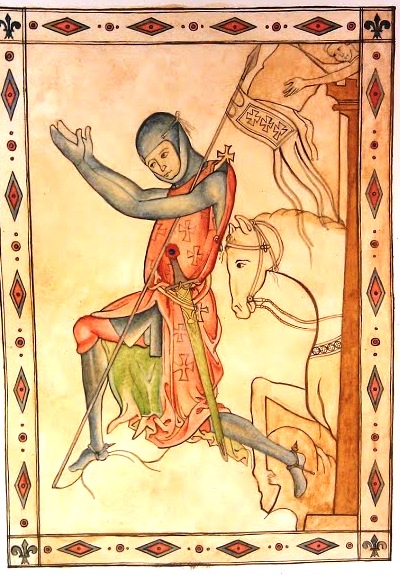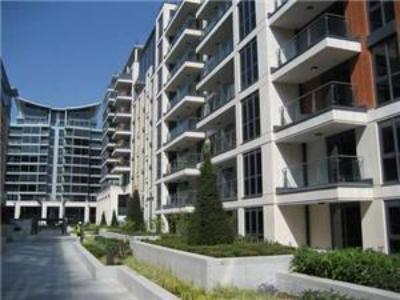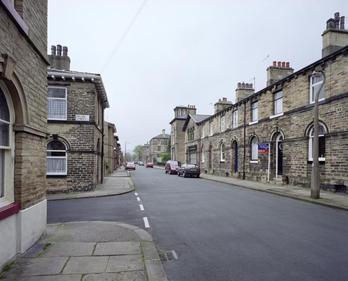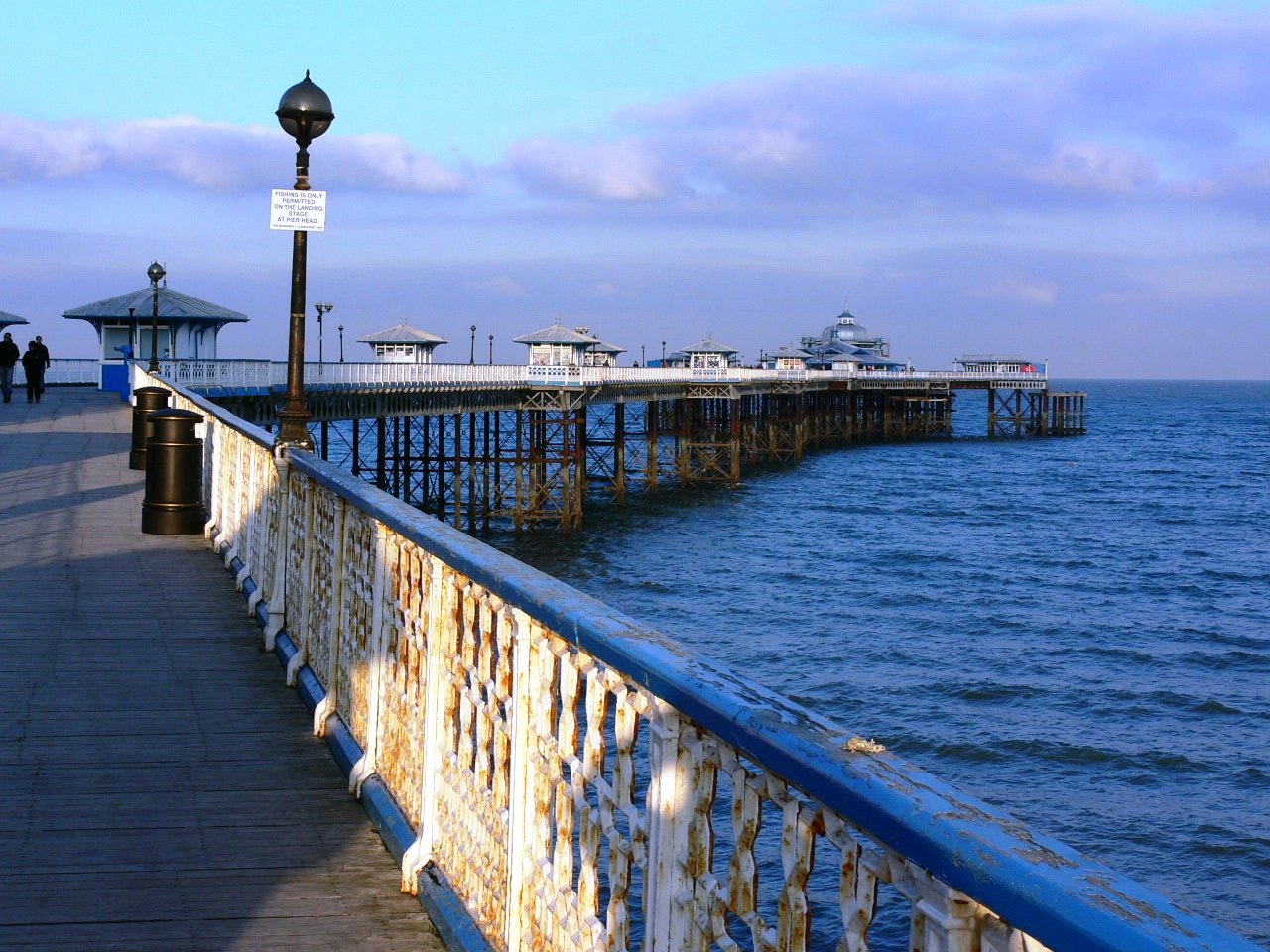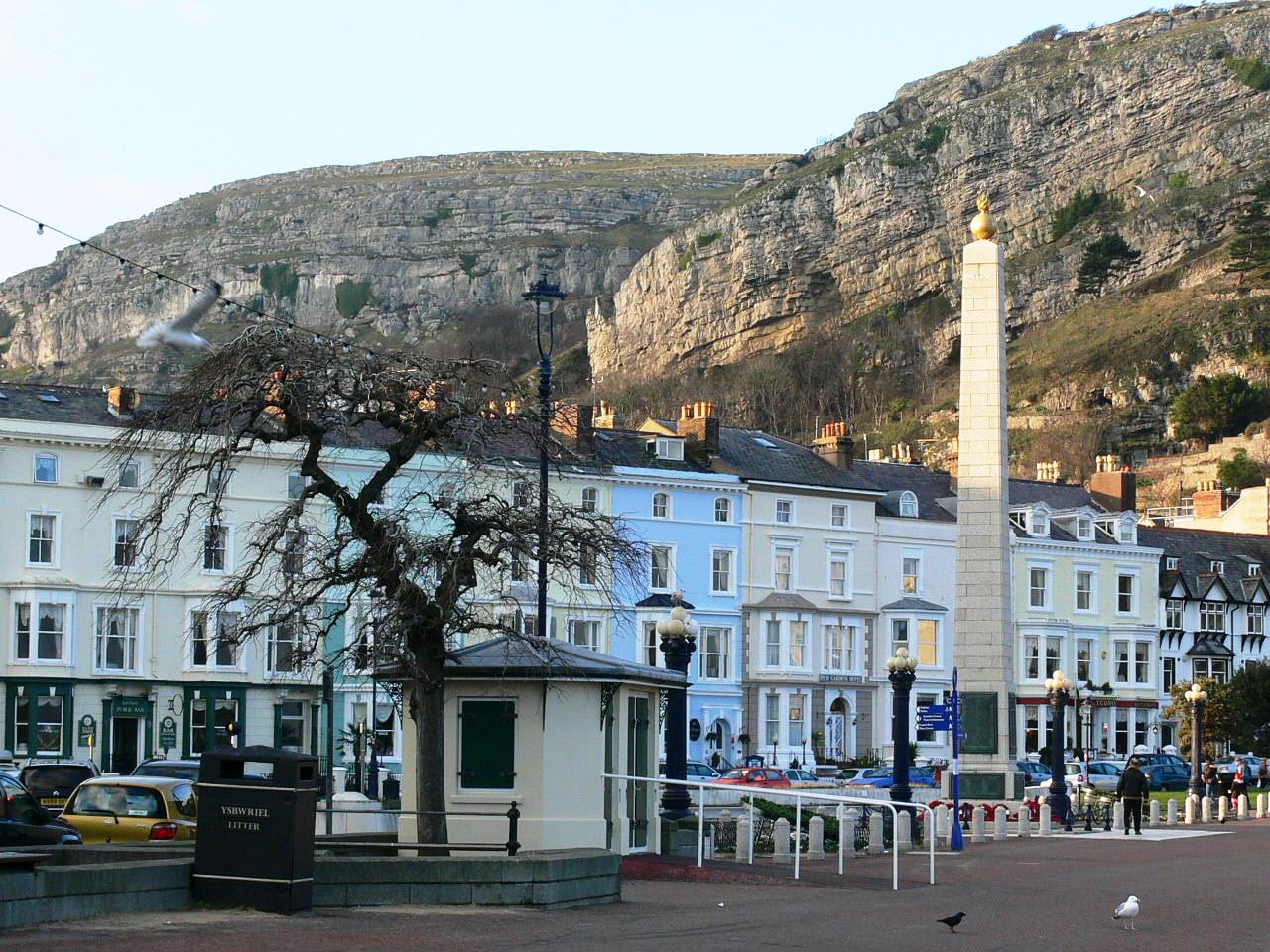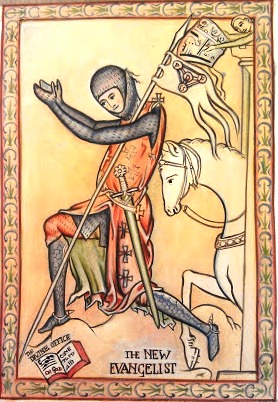Learn the method of the Byzantine-Slav world use in the 14-17th centuries from a world renowned Ukrainian expert based in Kyiv
Paintings from Students at the Gothic School of St Albans Painting Classes in July
 And a review by Fr John Bambrick from St Aloysius, Jackson, NJ
Here are some of the paintings done by the recent' classes teaching the gothic style of art using the 12th century English illuminations of the School of St Albans (with one contemporary French image there as well). As usual what strikes me hear is the ease with which Catholics from the Roman Rite take to these forms which are closely linked to that Rite. I have taught many classes of Eastern style icons and there is a cultural barrier to overcome that means that the quality of the painting is not as high. Some who have been exposed to the prejudice against Western forms that you hear in some icon painting classes, are intially suspicious. However, once they accept that they are allowed to like Western gothic art and that it is just as authentically liturgical and worth of veneration as a Russian or Greek icon, then they seem to take to these forms very naturally.
And a review by Fr John Bambrick from St Aloysius, Jackson, NJ
Here are some of the paintings done by the recent' classes teaching the gothic style of art using the 12th century English illuminations of the School of St Albans (with one contemporary French image there as well). As usual what strikes me hear is the ease with which Catholics from the Roman Rite take to these forms which are closely linked to that Rite. I have taught many classes of Eastern style icons and there is a cultural barrier to overcome that means that the quality of the painting is not as high. Some who have been exposed to the prejudice against Western forms that you hear in some icon painting classes, are intially suspicious. However, once they accept that they are allowed to like Western gothic art and that it is just as authentically liturgical and worth of veneration as a Russian or Greek icon, then they seem to take to these forms very naturally.
Students always want to change things and interpret. In Eastern icon painting classes, you almost always have to say no because the changes suggested are not appropriate. I find that in this form the students quickly inhabit the gothic world and when they suggest changes they would like to make, they are in accord with the tradition and so, provided that it won't detract from the learning process, I usually them to do it.
Fr John Bambrick, who attended the class at TMC in Merrimack NH wrote a generous review of the week in his parish bulletin and here is what he said:
"The Week of July 28th I took a class on Christian Iconography at St. Thomas More College of Liberal Arts in Merrimack New Hampshire. It is a small liberal arts college with a strong traditional Catholic identity in New England. Professors are called ‘Fellows’ at this College. To be honest I cannot draw a straight line; however through the skill of Fellow David Clayton I competed an egg tempera copy of an illumination from a Medieval Psalter. The excellence of his teaching was apparent when the entire class completed their Icons. If David is ever considered for canonization this could be considered one of his first miracles! He has just published a very fine work on prayer for the family called, “The Little Oratory: A beginners guide to praying in the home”. You can find this gem on Amazon.com. He also maintains a blog on Art, Religion and culture called thewayofbeauty.org. We also had a wonderful field trip to a Russian Icon Museum in Massachusetts. One of the most reproduced Icons is the Mother of God under various titles." The full bulletin is here.
Most of the students had never done a class before, although some were doing their second or third class. The image top left, which is shown again on a larger scale was done by an 18-year old who was attending his first class ever. The original images are from the 12th century Westminster psalter apart from the image of the Creator making the universe according to weight and measure and number, which is from a French manuscript of the same period.
I am receiving inquiries from about when the next class will be. So for any who are interested we will be running and icon painting class in Columbus, Ohio running from October 20-24th. Full details will appear shortly in this blog and Facebook, but any who are interested should email me through this blog giving me your email address which I will forward to Gina Switzer who is organizing it.
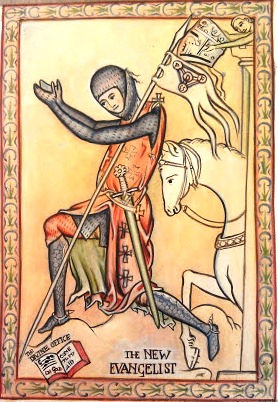
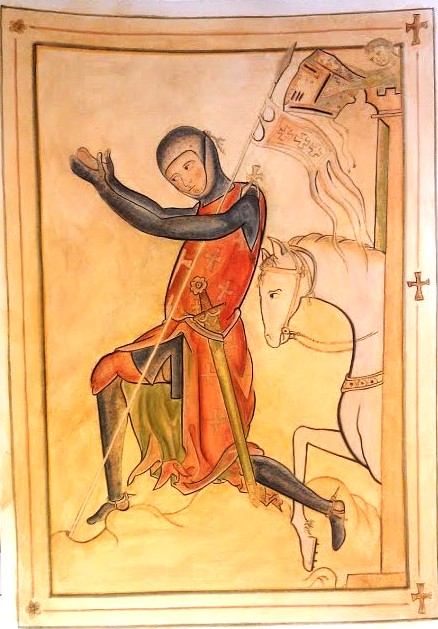
We can build Jerusalem amongst the Satanic housing projects of our inner cities
 Even mass housing can be made uplifting by using traditional proportions
What makes a beautiful building? I would say that traditional proportionality is one vital component that is virtually ignored by all modern architects. The new online course of the Way of Beauty (see the page of that name on this blog) gives the most detailed answer to this question yet. It's all about traditional proportion and harmony which was principle, derived from the patterns of the liturgy, that was used to govern the whole of the culture. All of time and space, not just the beautiful buildings of the past, were ordered according to its principles.
Even mass housing can be made uplifting by using traditional proportions
What makes a beautiful building? I would say that traditional proportionality is one vital component that is virtually ignored by all modern architects. The new online course of the Way of Beauty (see the page of that name on this blog) gives the most detailed answer to this question yet. It's all about traditional proportion and harmony which was principle, derived from the patterns of the liturgy, that was used to govern the whole of the culture. All of time and space, not just the beautiful buildings of the past, were ordered according to its principles.
This is why the building above left, built in the 18th century, is not only still standing, but is also a listed building and is sought after by professionals in the North of England as a fashionable place to live; but many of the equivalent mass housing projects of the 20 century, like the one show below, are already being knocked down. The one shown was Rockwell Gardens which was demolished in 2003 and didn't even last 50 years.
The traditional idea is that certain combinations of dimensions of a building speak to us more clearly than others because they are more beautiful. The modern idea, in contrast, is that there is an infinite range of ratios and proportionalities to choose from and one is no more valid than any other, it’s just a matter of opinion.
The Christian tradition says that certain proportions are beautiful because they reflect the divine order; and the Creator hardwired us to recognize them. When we see something as beautiful in the natural world for example, it is this is divine order – the thumbprint of the Creator in His work – is what we are responding to. The work of man can reflect this as well, with God’s grace and humility and good sense on the part of man. These proportions were used in architecture almost without question through to the end of the 19th century. (To get more information take the online course from this blog or sign on direct here.) By the end of the 19th century, its use seems to have been disconnected from the Christian understanding. When traditional taste was challenged, those who wished to resist the destruction of the old methods were not equipped with underlying principles to defent their case. The Bauhaus movement in Austria at the turn of the last century, for example, vigorously challenged tradition. they defined themselves as much by what they were not, as by what they were. The challenge was effective and by the period after the Second World War barely any architects used the traditional proportions.
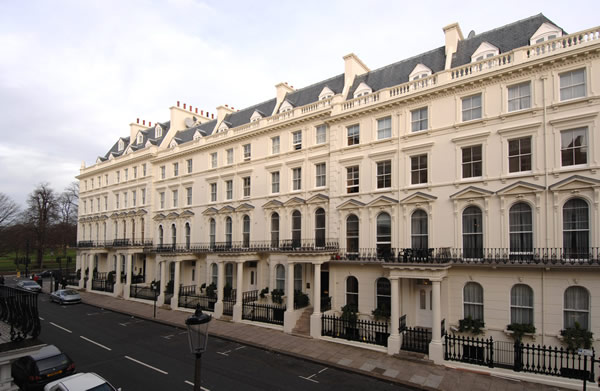 I have picked out some examples to illustrate my points. Consider first the elegant housing, right, in upmarket South Kensington in London dating from the Victorian period. Notice how each storey is has a different dimension. There is a rhythmical progression: the first is to the second as the second is to the third and so on. We pick this up naturally and the effect is pleasing, but those harmonies will have been carefully calculated by the architect.
I have picked out some examples to illustrate my points. Consider first the elegant housing, right, in upmarket South Kensington in London dating from the Victorian period. Notice how each storey is has a different dimension. There is a rhythmical progression: the first is to the second as the second is to the third and so on. We pick this up naturally and the effect is pleasing, but those harmonies will have been carefully calculated by the architect.
In the ideal there will be a minimum of three stories. A single relationship is created by two parties. In the context of dimensions two lengths together this relationship is called a ‘ratio’. In order to get a measure of the ratio we need another to compare it to. So a minimum of three stories is needed to create two ratios. That is, the first is to the second, as the second is to the first. A ‘proportion’ is a relationship between two or more ratios. So when the two ratios combine well, we have harmonious ‘proportion’. Consider a musical analogy. While combinations of two notes can be pleasing as harmonious intervals, the chord structure is generally based upon combinations of three notes. This was housing made for the well-to-do in Victorian England. If more than three stories are required, then the architect might continue to diminish the size of each successive storey, repeating the progression each time (as we see in these South Kensington houses). Alternatively, they repeat the dimension of the second for all storeys except the last. So the effect is of a large stable base, a number of storeys of even size, and then a cap which is the smaller than the other two. We see this in the 19th century mill building shown below: Salt's Mill in Yorkshire, England.
Contrast it with modern apartments which were built for a today’s smart set in Chelsea Harbour, right. When this development was built the talk was of the film stars who bought the upper level apartments with the views of London's River Thames. Lady Diana used to work out at the fashionable gym here. Yet I think they were short changed on style. Immediately one can see how each storey is identically spaced and the effect, to my eye, is one of sterility and dullness in comparison with the earlier structures. The point here is that the architects, if they had the knowledge, could just as easily have conformed to the harmonious proportion. If they had, my guess is that the value of these houses would be much higher, because they would be more sought after.
With the establishment of railways in Victorian Britain, seaside town grew up as day trip or holiday destinations a train ride from the main population centres. I grew up in the northwest of England, near the cities of Liverpool and Manchester. Llandudno, on the coast of North Wales is such a resort that grew to serve these populations. The buildings shown left are seafront hotels and one can see the same variation in the stories as we saw in South Kensington. Just to give people a sense of the place (and because it reminds me of home and like to look at them) I have included at the bottom some more photos. They are taken. Even the pier has octagonal geometric art, which looks as though its straight from Islamic Marrakesh on the cast iron railings (complete with seagull).
 I would like to make an appeal to architects to start reincorporating these proportional ideas into their designs. How much better might the environment of our inner cities be if even mass housing conformed to them? And just to inspire you, here is mass housing from the 19th century. These workers cottages, shown at the top and below left, were built by a mill owner, Titus Salt in Yorkshire in northern England. The mill he made, shown left and above, is so beautiful that it is now an art gallery and this and the village he built for the workers is designated a World Heritage Site. The end terrace at the top of this article is one such home. Those that have only two stories are the cheapest housing and smallest homes. Nevertheless, the architects still went to the trouble of varying the storey size according to traditional ideas. And they are appealing enough to be desirable homes if placed on today's open market. These simply followed design rules not only improve the environment, they add value!
I would like to make an appeal to architects to start reincorporating these proportional ideas into their designs. How much better might the environment of our inner cities be if even mass housing conformed to them? And just to inspire you, here is mass housing from the 19th century. These workers cottages, shown at the top and below left, were built by a mill owner, Titus Salt in Yorkshire in northern England. The mill he made, shown left and above, is so beautiful that it is now an art gallery and this and the village he built for the workers is designated a World Heritage Site. The end terrace at the top of this article is one such home. Those that have only two stories are the cheapest housing and smallest homes. Nevertheless, the architects still went to the trouble of varying the storey size according to traditional ideas. And they are appealing enough to be desirable homes if placed on today's open market. These simply followed design rules not only improve the environment, they add value!
The entrepreneurial spirit of 19th century Britain tends to get a bad press nowadays. No doubt the conditions of Titus Salt’s mill workers would not have been the same as those of today, but these houses do not speak of a mill owner who is seeking to exploit his workforce.
William Blake wrote in a much quoted line of England’s ‘dark, satanic, mills’. I would prefer to think that the end of the poem is more accurate and that Jerusalem was ‘builded here’. Furthermore, Titus Salt is an example that we can follow and try to build Jerusalem today.
The Way of Beauty course costs $99 for 25 hours continuing education credit from Thomas More College of Liberal Arts, read more about it on the Online Course page of this blog or sign on direct by following the link here.
Announcing a New Online Course on the Way of Beauty - continuing education for teachers, homeschoolers...and all those interested in cultural transformation
 This is the most thorough and complete presentation yet of how to follow the via pulchtritudinis, to teach others how to do it too and transform the culture in the process! Includes detailed material available for the first time which is not available anywhere else.
This is the most thorough and complete presentation yet of how to follow the via pulchtritudinis, to teach others how to do it too and transform the culture in the process! Includes detailed material available for the first time which is not available anywhere else.
A course for teachers, home-schoolers, parents, educators, artist, architects, those involved in the formation of adults at parish level... and anyone interested in seeing a culture of beauty.
Endorsed by Thomas More College of Liberal Arts, Merrimack, NH.
- 13- videos produced with Catholic TV - watch the first one for free here
- A four part e-book, The Way of Beauty: Liturgy, Education, Art and Inspiration written exclusively for the course. See a chapter by chapter summary here: Contents.chapter.by.chapter
I am delighted to offer for the first time an online course in the Way of Beauty TM, SM for credit. It is my most thorough and deepest exploration yet of the theology and philosophy of the topics that I cover in my blog, much of it not seen anywhere else. Do you know, for example what makes an image worthy of veneration and for use in the liturgy? Did you know that icons are neither the only or the highest form of sacred art in the Catholic tradition and that the High Renaissance isn't appropriate at all? Do you know what Newman said is the most important feature of a successful educational institution? (Clue: it's not the curriculum, or the quality of the teachers or the teaching methods used.) Or what Pope Benedict says is the purpose of all Christian education, no matter what subject is taught?
Topics in this course include:
- the glory of the figurative artistic traditions of the Church (and the lack of it in those that reflect modern philosophy),
- traditional harmony and proportion in art, architecture and patterned art,
- and through these we demonstrate the connection between our worship in the liturgy and the forms contemporary culture, in the broadest sense of the word, which incorporates all human activity.
You will qualify for 25 hours continuing education, endorsed by Thomas More College of Liberal Arts. The cost is just $99. We have set this price so that it is within the budget of all.
See more and sign up for this course now
This course is a unique presentation of the Way of BeautyTM, SM- the via pulchritudis - that leads us to Beauty itself and is itself Beautiful. What is presented here is simultaneously traditional, and radical and revolutionary. Most of the written material provided was created especially for this course and not available in this detail or in such a coherent and integrated presentation anywhere else, not even my blog, my books or past articles.
You do the study in your own time, at your own pace. To sign up follow the link here. To complete this and get the credit you simply have to: watch the 13 videos in a series entitled the Way of Beauty TM, SM, which has the beautiful production values of Catholic TV with whom we made the shows; and then read the material written exclusively for this course and which accompanies the videos; and finally you when have done this you tell us... and we send you the diploma. For those who wish to talk about the material there will be a chat room for participants, and anyone is free anytime to email me and ask questions.
The hope is that this program will be extended to college level credit in the Fall. For high-school students or undergraduates looking to get transferable college level credit, we will require some additional reading and there will be quizzes and graded exams. For even more credit at either level, you will be able to combine it with the residential practical classes in painting supported by lectures that will appear in different locations around the country in the coming year.
We have deliberately set this at a special low price.
A course for teachers, homeschoolers, parents, educators, artist, architects and anyone interested in a beautiful culture: this material was originally developed as a formation for artists and as such it can help in the formation of anyone interested in the creation of beauty. At Thomas More College as we contemplated offering the course to undergraduates, we realized very quickly that this is in fact intrinsic any good education no matter what is taught - every single one of us would benefit from a formation in beauty for all good things can and ought to be done beautifully. It was integrated into the core undergraduate program in the liberal arts and has been taught for the past 5 years with great success both to undergraduates and in the residential summer schools, open to all, that take place at the college campus each year. So as well as artists, musicians and architects, it will be of interest to anyone interested in the formation of adults or children and anyone who is interested in developing a curriculum for a Catholic education, for example, home-schoolers, parents and teachers of any discipline.
In the course I draw on a number of sources for this. First my experience over many years as an internationally known professional artist and experienced teacher of art using traditional methods, as well as my experience of the medieval structures of Oxford University. This course also reflects faithfully the traditions of the Church and draws upon the writings of Church Fathers, especially Augustine and Boethius; and more recent commentators on beauty, culture, liturgy and education such as Blessed JH Newman, St Pope John Paul II and most prominently Benedict XVI. It outlines a way of educating that is consistent with the Faith and is transmitted joyously.
For those who are aware of my book, co-written with Leila Lawler, the Little Oratory, A Beginner's Guide to Prayer in the Home, this is a much deeper exploration of the theology and theories which are the foundation of the practices of prayer and worship it describes. It is the soundness of its foundation in the Faith that caused Scott Hahn to describe the book as follows: 'This is one of the most beautiful books I've ever seen. It is inspiring yet practical, realistic yet revolutionary. If one book has the potential to transform the Catholic family (and society), this is it.'
Through a series of 13 half hour videos and detailed written materials created especially for this course. We cover such topics as:
- Cult and culture: how culture in general is derived from our worship and why it is the strongest influence on is in our formation and our education, bar none - not social factors, not economics, not politics.
- Catholic Education The course will explain how an education in beauty can be taught to people of any age and integrated with the education as a whole. It will also explain why every Catholic education, no matter what is taught, no matter how narrow or vocational, should be integrated with an education in beauty, for it will enable those so formed to do all things better.
- The Catholic traditions in figurative art with case studies on a number of paintings in each figurative tradition. You will know, for example, what makes the gothic, the baroque and the iconographic styles distinct; and what connects them so that each tradition is appropriate for the liturgy. We contrast and compare these with the forms of art that reflect modern philosophy and from traditional non-Christian cultures.
- The numerical basis of the patterns of beauty - how to order time and space according to traditional harmonious proportion. You will have a detailed account of the scriptural and cosmic sources for traditional ideas of proportion and harmony and understand how each reflects the patterns of the liturgy. This is most commonly associated with architectural proportion and music, but in fact has application in just about any aspect of human culture. You will learn why, for example, the Golden Section is not one of the traditional proportions of beauty, contrary to popular opinion. This will also include a description of traditional number symbolism and you will see how this was used to design traditional forms of art, both figurative and non-figurative patterned art.
- Creativity, Intuition and Love These are the fruits of a traditional education in beauty. It develops us as people so that we have more ideas and better ideas and can grasp the relationship between particulars and the whole in any context better. It also increases our capacity to love God and man and our inclination to do so. This is demonstrated not only by reference to the traditional understanding of these things, but also to modern scientific research which supports the points made. While this is presented as a discussion about these topics as subjects to learn, we provide guidance also to those who wish to become more creative, intuitive and loving by actually practicing and experiencing the principles described.
The Way of BeautyTM, SM is a service mark and trade mark wholly owned by David Clayton and cannot be used by others except with his permission.
Our chivalrous modern day Knight of the New Evangelization is my symbol of today's mission for the Church!







